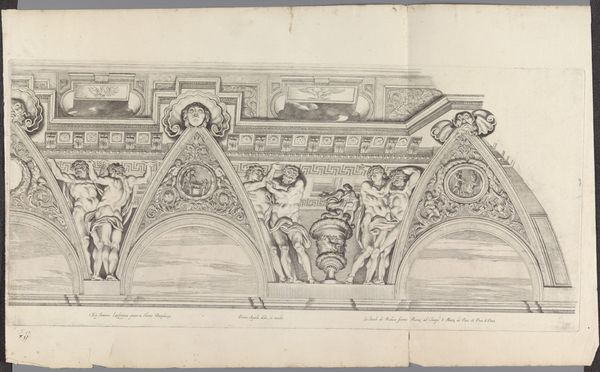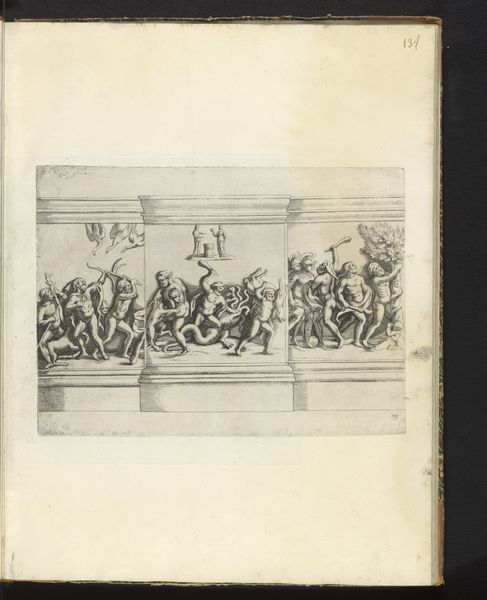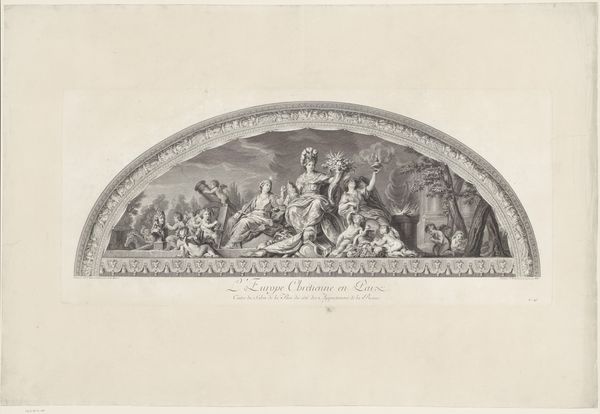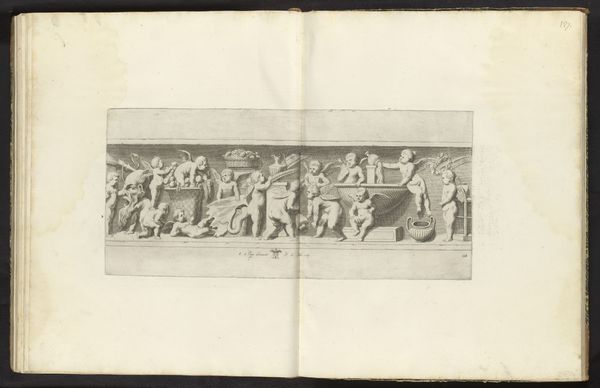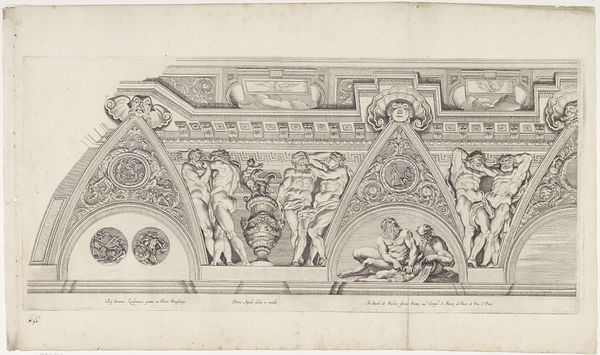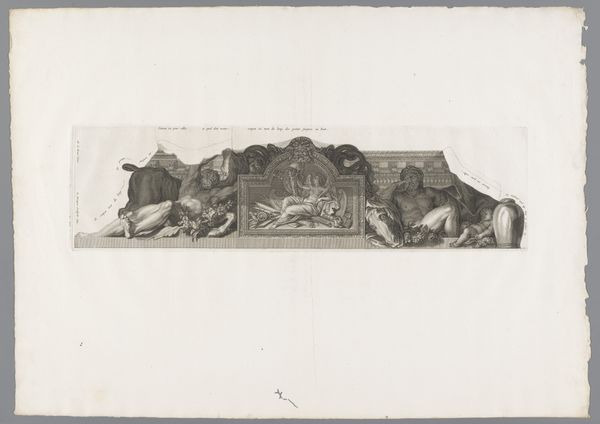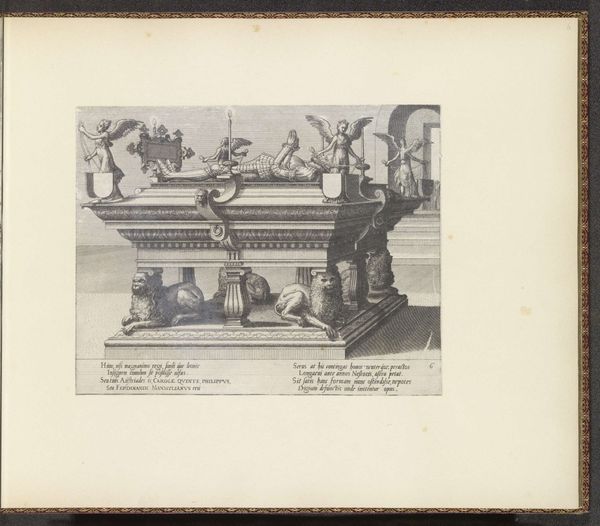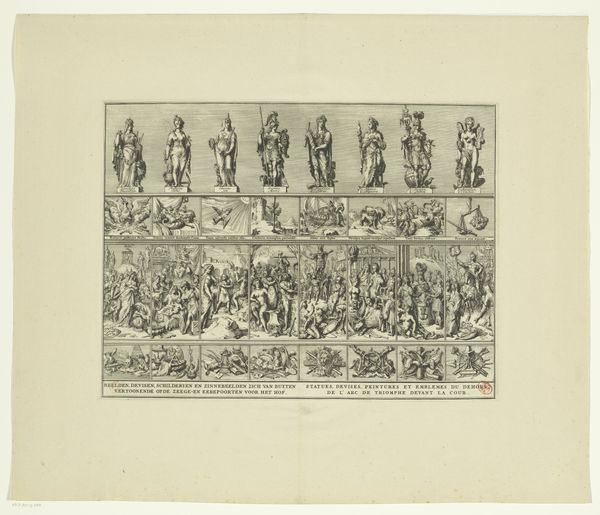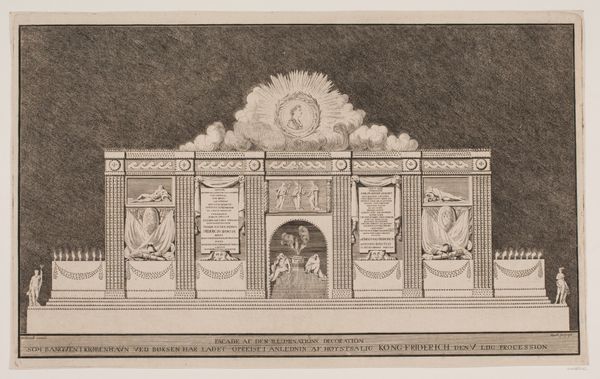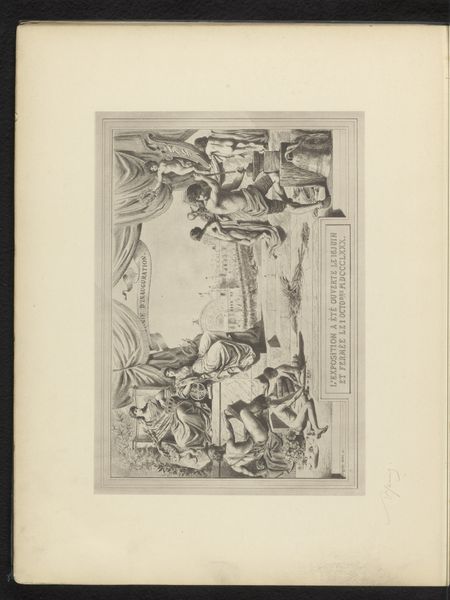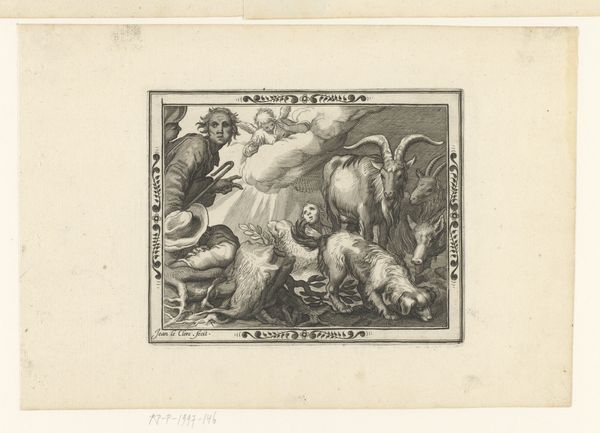
print, engraving
#
baroque
# print
#
classical-realism
#
figuration
#
history-painting
#
engraving
Dimensions: height 335 mm, width 678 mm, height 433 mm, width 699 mm
Copyright: Rijks Museum: Open Domain
Editor: Here we have Pietro Aquila's "Detail plafondschildering," an engraving from 1656. It's a striking composition, very classical, almost like a frieze. There’s so much energy in the figures. What do you see in the organization of these forms? Curator: Indeed. Observe first the geometric underpinning: the pronounced, flattened arch. Notice how within this defined shape, the artist organizes the figures not for narrative clarity but to emphasize dynamic symmetry. Editor: Dynamic symmetry? Curator: Note the repeated muscular figures, their limbs arranged almost as mirror images on either side of the central architectural element. This creates a visual echo, reinforcing the print's structure. Are you observing this as well? Editor: Yes, the figures do frame that central cartouche with the floral emblem, like architectural supports. And above, that grotesque mask spouting water balances the whole composition. Curator: Precisely. Consider how Aquila uses line – dense, controlled hatching – not only to model form but to create textures that interplay with the overall graphic design. The figures are not just bodies; they become elements within a structured whole. The texture of their bodies appears as intentional design. Editor: I hadn't thought of it so abstractly before. Seeing the forms almost as geometric components clarifies it for me. Curator: Focusing on form illuminates the artistic choices being made beyond just subject representation, thereby shaping the work's intrinsic qualities and the experience of seeing. This focus informs a deeper, potentially richer experience. Editor: Thank you! This perspective highlights that even a seemingly historical scene prioritizes a delicate and interesting visual balance and arrangement.
Comments
No comments
Be the first to comment and join the conversation on the ultimate creative platform.

